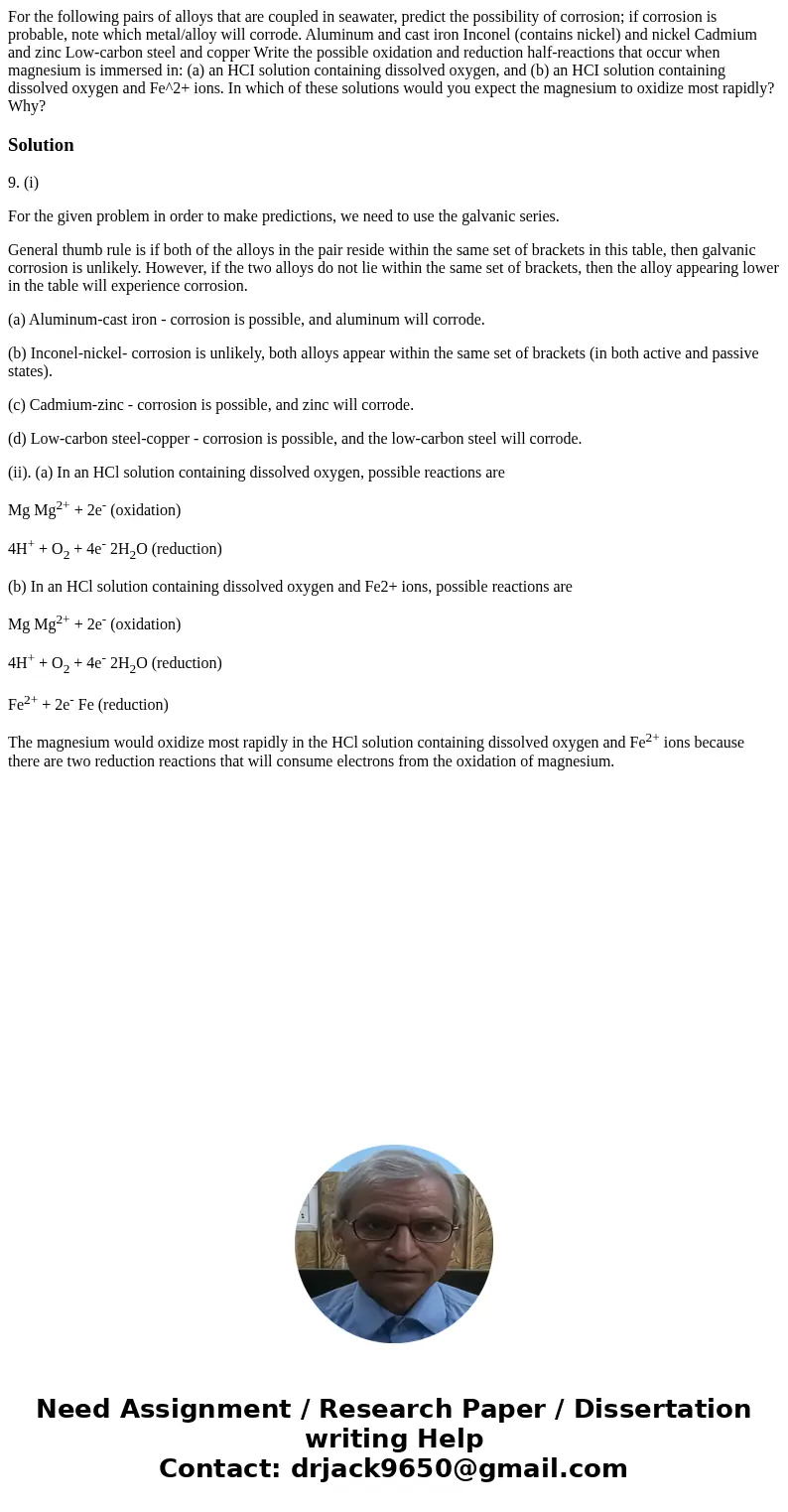For the following pairs of alloys that are coupled in seawat
Solution
9. (i)
For the given problem in order to make predictions, we need to use the galvanic series.
General thumb rule is if both of the alloys in the pair reside within the same set of brackets in this table, then galvanic corrosion is unlikely. However, if the two alloys do not lie within the same set of brackets, then the alloy appearing lower in the table will experience corrosion.
(a) Aluminum-cast iron - corrosion is possible, and aluminum will corrode.
(b) Inconel-nickel- corrosion is unlikely, both alloys appear within the same set of brackets (in both active and passive states).
(c) Cadmium-zinc - corrosion is possible, and zinc will corrode.
(d) Low-carbon steel-copper - corrosion is possible, and the low-carbon steel will corrode.
(ii). (a) In an HCl solution containing dissolved oxygen, possible reactions are
Mg Mg2+ + 2e- (oxidation)
4H+ + O2 + 4e- 2H2O (reduction)
(b) In an HCl solution containing dissolved oxygen and Fe2+ ions, possible reactions are
Mg Mg2+ + 2e- (oxidation)
4H+ + O2 + 4e- 2H2O (reduction)
Fe2+ + 2e- Fe (reduction)
The magnesium would oxidize most rapidly in the HCl solution containing dissolved oxygen and Fe2+ ions because there are two reduction reactions that will consume electrons from the oxidation of magnesium.

 Homework Sourse
Homework Sourse